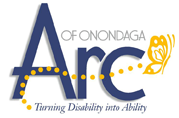Tax Cut and Jobs Act

As a result of the Tax Cuts and Jobs Act signed into law on December 22, 2017, many individuals will find that they do not receive a Federal or State income tax benefit associated with some of their charitable contributions. This is a result of the increase in the standard deduction, coupled with a new limitation on the deductibility of state and local income taxes, and certain other changes to the itemized deduction rules. Individuals who find themselves in this situation, nonetheless, may still have philanthropic tendencies and wish to consider different strategies to minimize the effect of this new law.
There are a number of strategies to consider, some of which are listed below.
PLEASE NOTE, this list is not exhaustive, nor is this considered to be tax advice. As always, you should consult with your tax advisor before implementing and tax-saving strategy.
Bunching charitable contributions into one year – some individuals will find that making multiple years’ worth of charitable contributions in one year may will allow some tax benefits to be realized in the year these are bunched into, compared to benefits that may be lost by spreading such contributions over a number of year.
Donation of Appreciated Marketable Securities – the contribution of appreciated securities to a charity may allow an individual to avoid paying tax on the inherent gain associated with the unrealized appreciation while also qualifying for a charitable contribution deduction equal to the fair market value of the contributed securities.
Donations of other types of assets – noncash donations of various types of property may qualify for charitable contributions, including the avoidance of certain unrealized gains, but to the extent this strategy is employed a qualified appraisal may be needed.
Establishment of a Donor Advised Fund – use of this strategy may allow for a contribution of a large sum of money or property to a public charity in the form of a special fund that is distributed to qualified charities in later years, receiving a current charitable contribution deduction while retaining some rights to advise the charity on how to invest or donate the funds in future years. Many mutual fund families have special public charities designed to assist in implementing this strategy, as well as many local community foundations.
Direct distribution from an IRA to a charity – this strategy involves a direct trustee to charity distribution of up to $ 100,000 per year from a traditional or Roth IRA and is for individuals who have attained age 70 ½. This strategy allows the amount distributed to be excluded from income, with the offset that the charitable contribution is also not deductible but often has a better net tax effect than having picked up the income and obtaining a full deduction for the charitable contribution. However, this strategy is only applicable for certain types of recipient charities.
Formation of a charitable lead or charitable remainder trust – this involves a strategy of a split gift, whereby either a current, future interest or income interest is given to a charity, and the remaining interests are given to anticipated beneficiaries of a person’s bequest. This allows for potential heirs to still receive large benefits, and for the donor to receive some form of a charitable contribution deduction.
This is not intended to be tax advice, but only general income tax information. As with any tax-saving strategy, you should consult with your tax advisor before entering into a transaction. The Arc of Onondaga Foundation would be pleased to have you consider such strategies in your quest to support our organization and can provide a list of qualified advisors for you to consult with if you do not already have one.


